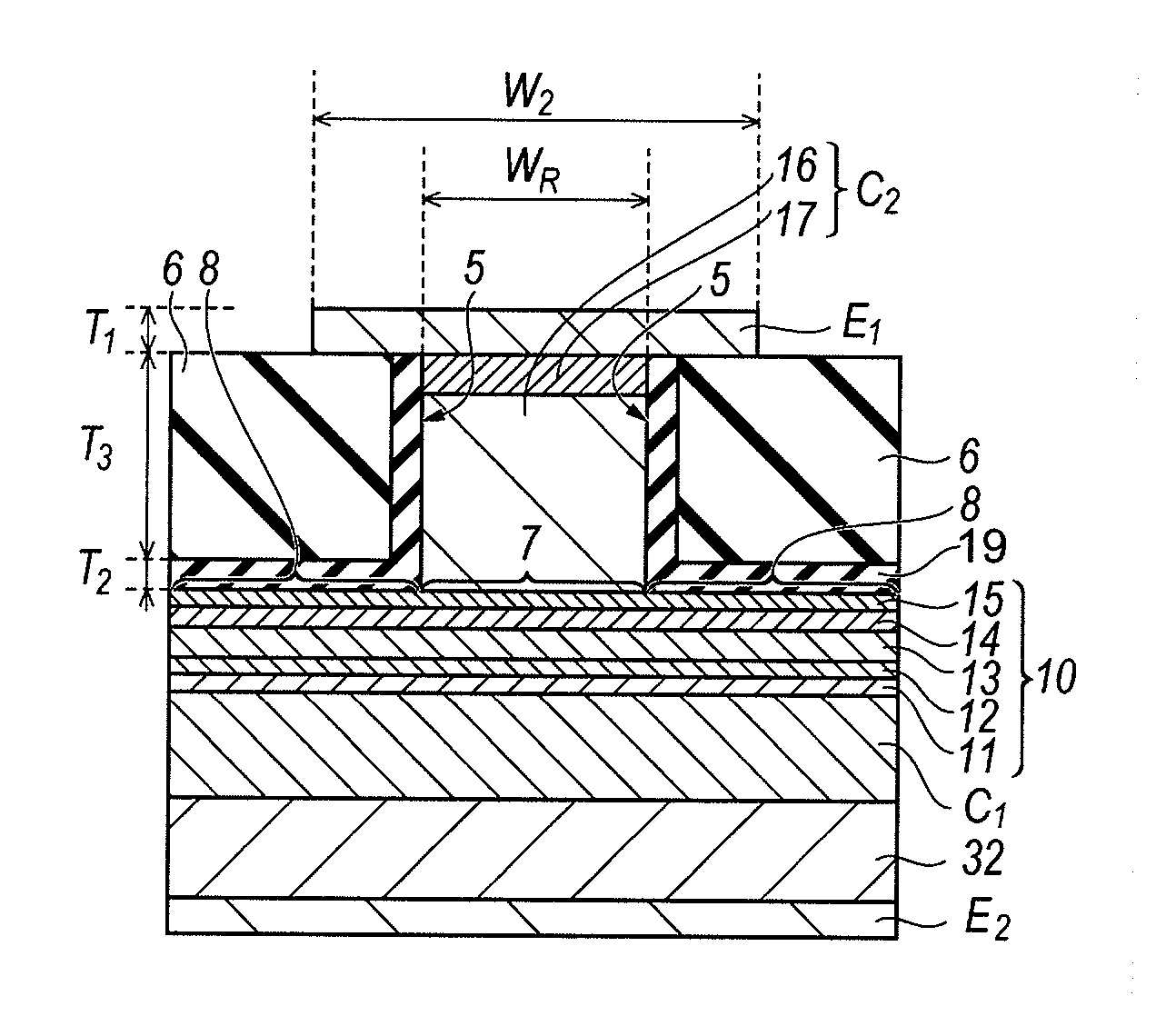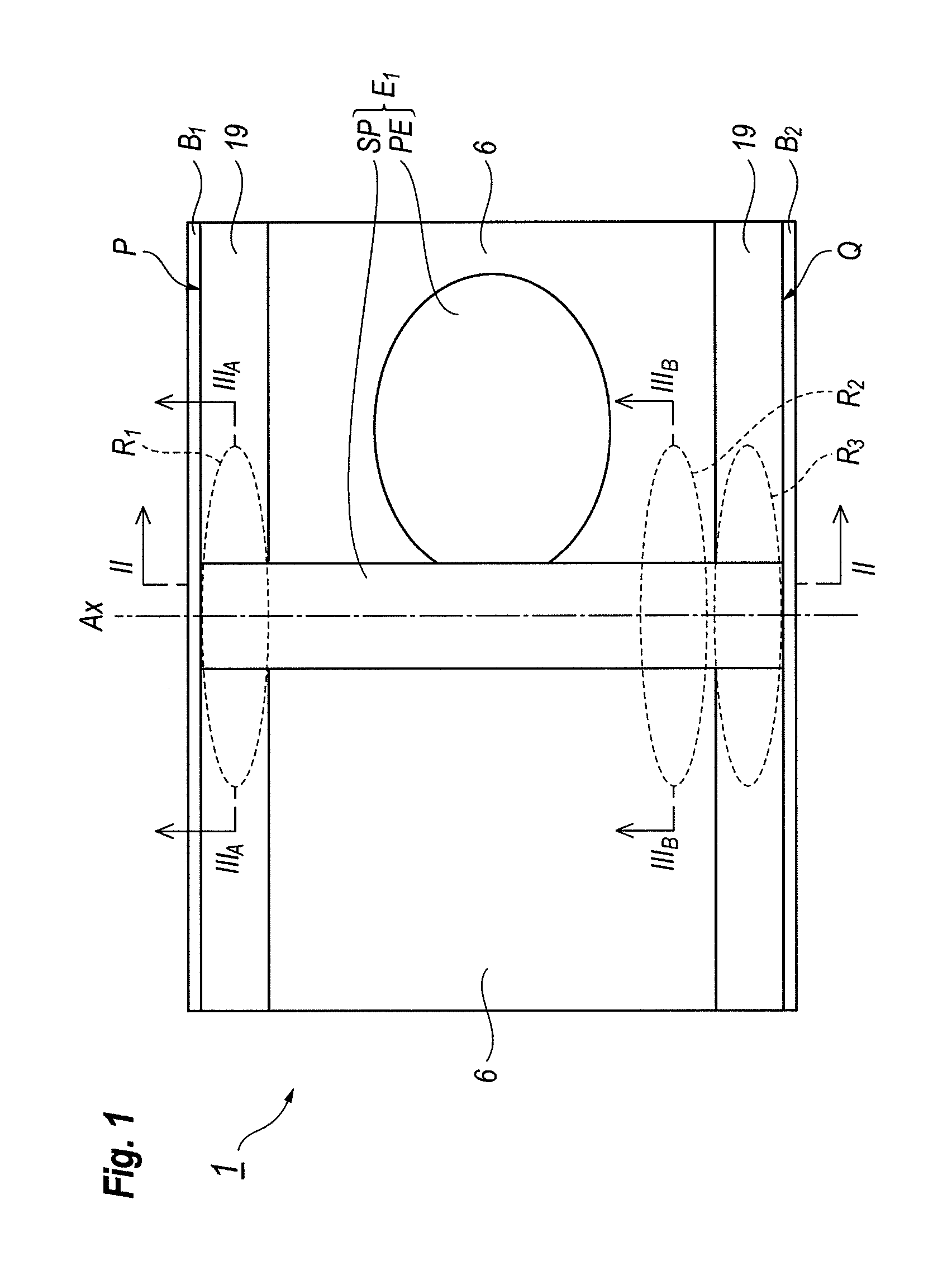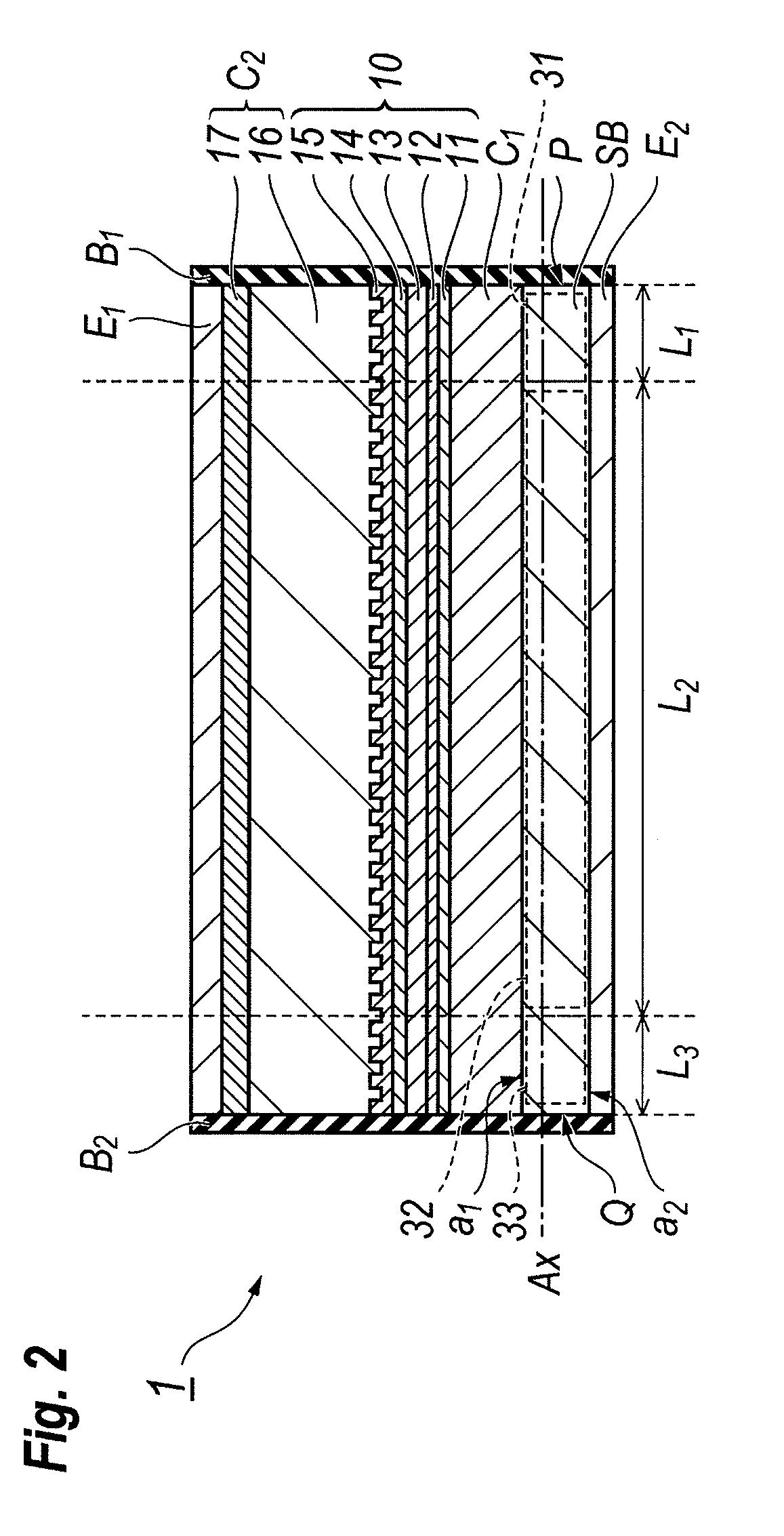Laser diode with ridge waveguide structure and method for manufacturing the same
a laser diode and ridge waveguide technology, applied in the direction of lasers, laser optical resonator construction, laser details, etc., can solve the problems of inferior heat dissipation function of thicker burying layer, inferior thermal conductivity of about 0.3 w/m/k, and use of reinforcing resin, so as to improve the heat dissipation function
- Summary
- Abstract
- Description
- Claims
- Application Information
AI Technical Summary
Benefits of technology
Problems solved by technology
Method used
Image
Examples
first embodiment
[0030]An LD with the ridge waveguide structure according to an embodiment of the present invention will be described as referring to FIGS. 1 to 3. FIG. 1 is a plan view of the LD 1 with the ridge waveguide structure. The LD 1 provides no resin layer 6 in edge regions of the device. Edge regions close to one facet P and to the other facet Q of the LD 1 has no resin layer 6; accordingly, an insulating layer 19 exposes thereat. The stripe SP of the first electrode E1, which provides an upper electrode of the LD 1, extends from the facet P to the other facet Q along the axis Ax. In the present embodiment, the axis Ax corresponds to a direction along which the light is guided.
[0031]FIG. 2 is a cross section taken along the line II-II appeared in FIG. 1. As shown in FIG. 2, the LD 1 with the ridge waveguide structure comprises a semiconductor substrate SB, a lower cladding layer C1, a core region 10, a ridge waveguide C2, the first electrode E1 and the second Electrode E2. The semiconduct...
second embodiment
[0070]Next, a second embodiment according to the present invention will be described as referring to FIGS. 16 and 17. FIG. 16 is a plan view showing an LD 2 with the ridge waveguide structure, while, FIGS. 17A and 17B are cross sections of the edge region taken along the line XVIA-XVIA, and along the line XVIB-XVIB, respectively.
[0071]The LD 2 with the ridge waveguide structure of the second embodiment has a feature distinguishable from the first embodiment is that a width of striped portion SP of the first electrode E1 is narrowed in the edge regions, 31 and 33. When the operational speed of the LD reaches and sometimes exceeds 10 Gbit / sec, it is preferable to decrease the capacitance, not only the junction capacitance but the parasitic capacitance, as small as possible. The LD 2 according to the second embodiment provides the first electrode E1 with a narrowed stripe SP in the edge regions, 31 and 33.
[0072]As shown in FIGS. 16 and 17, the first electrode E1 provides the striped po...
PUM
 Login to View More
Login to View More Abstract
Description
Claims
Application Information
 Login to View More
Login to View More - R&D
- Intellectual Property
- Life Sciences
- Materials
- Tech Scout
- Unparalleled Data Quality
- Higher Quality Content
- 60% Fewer Hallucinations
Browse by: Latest US Patents, China's latest patents, Technical Efficacy Thesaurus, Application Domain, Technology Topic, Popular Technical Reports.
© 2025 PatSnap. All rights reserved.Legal|Privacy policy|Modern Slavery Act Transparency Statement|Sitemap|About US| Contact US: help@patsnap.com



